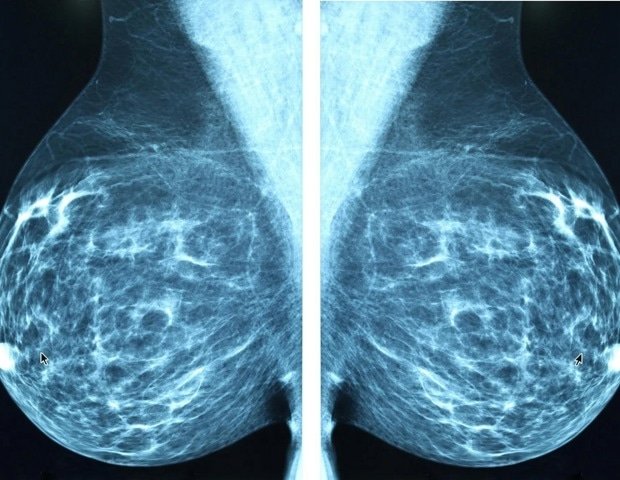An image-only artificial intelligence (AI) model for predicting five-year breast cancer risk provided stronger and more accurate risk stratification than breast density assessment, according to a new study to be presented next week at the annual meeting of the Radiological Society of North America (RSNA).
Senior author Constance D. Lehman, MD, Ph.D., professor of radiology at Harvard Medical School in Boston, Mass., said traditional methods of assessing a woman’s risk for breast cancer, including age, family history, genetics and breast density, are inadequate.
“More than two million women are diagnosed with breast cancer each year, and for most, it’s a complete shock,” she said. “Only 5 to 10% of breast cancer cases are thought to be hereditary, and breast density alone is a very weak predictor of risk.”
Clairity Breast, the first image-only AI breast cancer risk model approved by the FDA, was trained on 421,499 mammograms from 27 facilities in Europe, South America and the US. The model was calibrated on an independent set of trials using a deep convolutional neural network to generate five-year hazard probabilities.
The model is able to detect changes in breast tissue that the human eye cannot see. This is a job that radiologists simply cannot do. It is a separate project from detection and diagnosis and will open up a whole new field of medicine, harnessing the power of artificial intelligence and the untapped information in imaging.”
Constance D. Lehman, MD, Ph.D., professor of radiology, Harvard Medical School
The model was applied to a study cohort of 236,422 bilateral 2D screening mammograms from five US sites and 8,810 from one European site. Mammograms were obtained between 2011 and 2017. Radiologist-reported breast density (dense vs. nondense) and five-year cancer outcomes were extracted from medical records and tumor registries, respectively. AI-predicted risks were categorized using the National Comprehensive Cancer Network thresholds: average (less than 1.7%), intermediate (1.7-3.0%), and high (greater than 3.0%).
The researchers compared risk categories using statistical models accounting for follow-up time and censoring.
Taking breast density into account, women in the high-risk AI group had more than four times the incidence of cancer than women in the average-risk group (5.9% vs. 1.3%). In contrast, breast density alone showed only modest segregation (3.2% for dense vs. 2.7% for nondense).
“The results of this large-scale analysis show that AI risk models provide much stronger and more accurate risk stratification for five-year cancer prediction than breast density alone,” said first author and presenter Christiane Kuhl, MD, Ph.D., director, Department of Diagnostic and Interventional Radiology at RWTH Aachen University Hospital, Germany. “Our findings support the use of image-only AI as a supplement to traditional markers supporting a more personalized approach to screening.”
The American Cancer Society currently recommends that average-risk women have the option of starting annual breast cancer screening with a mammogram at age 40. However, women under 40 are the fastest growing group diagnosed with breast cancer and advanced disease.
“An AI image-based risk score can help us identify high-risk women more accurately than traditional methods and determine who may need screening at an earlier age,” Dr. Lehman said. “We have already screened some women in their 30s when they are clearly at high risk based on family history or genetics. In the future, a baseline mammogram at 30 could allow women with an image-based high risk index to participate in this earlier, more effective screening pathway.”
Breast density legislation enacted in 32 states requires health care providers to tell women undergoing screening mammography about their breast density.
“We would like to see women provide information about their breast density and risk score based on the AI image,” Dr Lehman said. “We can do better than just looking at a mammogram and saying, ‘Is it dense or not,’ to inform women of the risk they face.”
Other co-authors are David Miller, Mark Scully, Emily Hipp, Elizabeth A. Morris, MD, Toni W. Vomweg, MD, Lora D. Barke, DO, Louie Enriquez, MD, JD, and Philippe Raffy, Ph.D.
